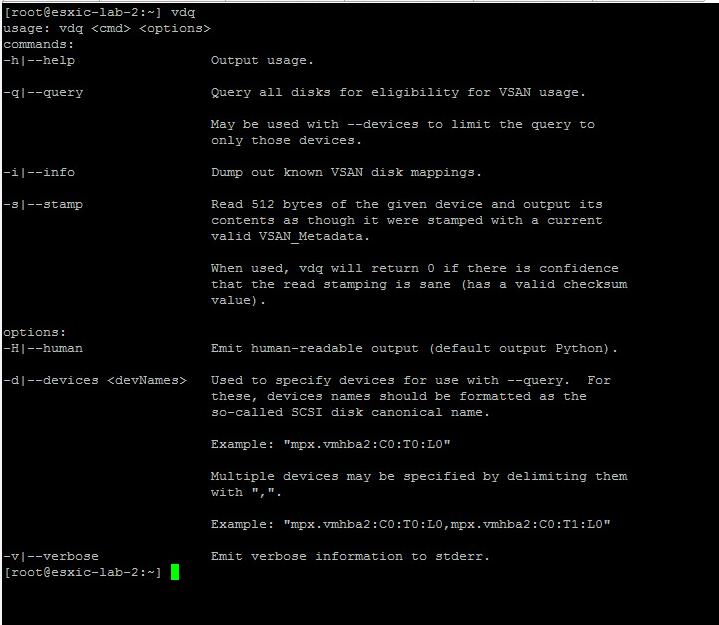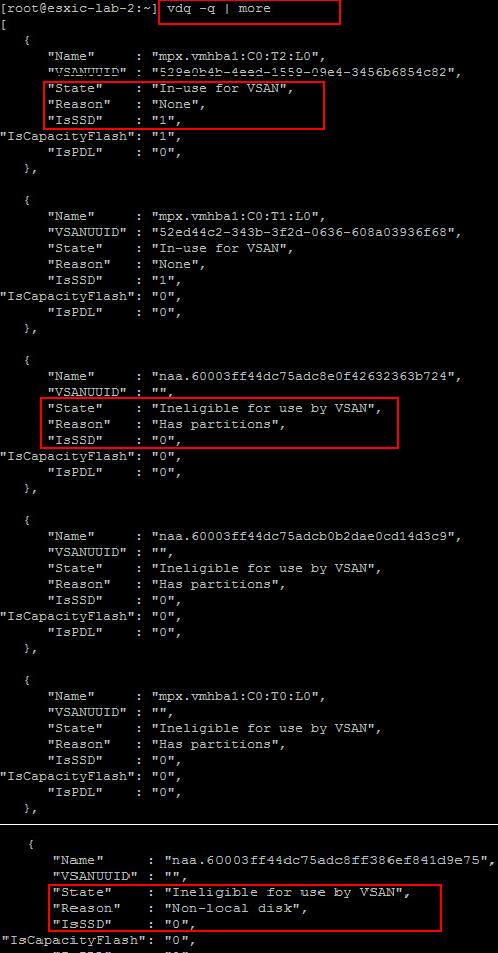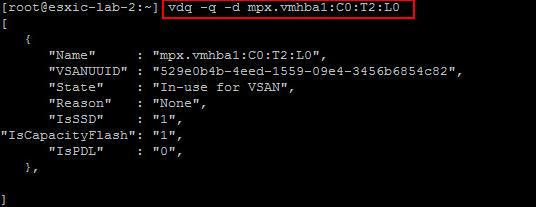VMWare vSAN is the VMware’s software-defined storage platform which delivers flash-optimized, secure storage. vSAN pools together server-attached storage to provide a highly resilient shared datastore suitable for any virtualized workload including business-critical applications, virtual desktops, Remote IT, DR and DevOps Infrastructure. VMware vSAN is the distributed layer of software that runs natively as a part of the ESXi hypervisor. Disks are very important for the vSAN implementation. There are two types of VSAN cluster you can create one is Hybrid VSAN and another one is All-Flash VSAN. All-Flash vSAN was released with vSAN 6.0 but Hybrid vSAN available from the initial release of vSAN. I will explain how to query disks for VSAN eligibility using vdq command.
Hybrid vSAN disk group should contain one Flash device (cache Tier) and one or more Magnetic disk (Max 7)(Capacity tier) to form a storage capacity.
All-Flash vSAN disk group should contain one Flash device (cache Tier) and one or more Flash disk (Max 7)(Capacity tier) to form a storage capacity
Take a look at the article to understand the difference between Hybrid vSAN and All-Flash vSAN
Before implementing any type of VSAN, we need to identify the eligible disks for VSAN. You can query disks for VSAN eligibility using vdq command which is available as part of ESXi hosts. vdq provides two useful commands, one that queries the ESXi host disks and shows whether it eligible or not for VSAN. The other command shows disk mappings of VSAN, once VSAN has been configured and enabled on your ESXi host.
Query Disks for VSAN Eligibility using vdq command
To query the disks for VSAN eligibility using the vdq command, Login to ESXi host using SSH with the root password. Type the below command to understand the options available with vdq command.
vdq
To query the disks on your ESXi host, you can run the following command
vdq -q
The above command provides a lot of useful information such as the disk device name, VSAN node UUID, the state of the disk (whether or not it can be used by VSAN or if it is already in use), reason which includes more details, whether the disk is an SSD or HDD and also if the device is in a PDL (Permanent Device Loss) state.
In the below example, It displays the reason for the ineligibility for VSAN such as “Has Partition”, “Non-local disk”, etc. If it is already used by VSAN, it displays the state as “In-use for VSAN”.
You can query the individual disk eligibility for VSAN using the below command
vdq -q -d devicename vdq -q -d mpx.vmhba1:c0:T2:L0
If VSAN is enabled, you can check VSAN disk group mapping using the below command
vdq -i
You can also add -H option to get the output in the Human readable format
vdq -i -H
Same VSAN disk mapping information can be gathered from vSphere Web Client -> VSAN Cluster -> Monitor -> VSAN ->Physical disks -> Expand the ESXi hosts.
That’s it. I hope this article helps you to understand how to query disks for VSAN eligibility using the vdq command. Thanks for reading!! Be social and share it with social media, if you feel worth sharing it.






